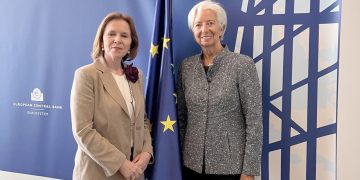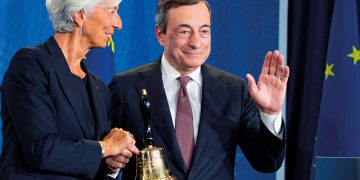In the latest pivot from years of ultra-accommodative policy, the European Central Bank (ECB) has embarked on a more tactical approach to managing inflation—one that emphasizes precision, flexibility, and rate differentials over blanket stimulus or aggressive tightening. This shift marks a new phase in the eurozone’s monetary regime, with profound implications for financial markets across the continent and beyond.
At the heart of this policy evolution lies a renewed focus on key rate differentials—the subtle but powerful gaps between the ECB’s main refinancing rate, deposit facility rate, and the rates set by other central banks, particularly the U.S. Federal Reserve. These spreads act not only as monetary signals but also as pricing anchors for everything from government bonds to corporate credit to equities.
For investors navigating both equity and bond markets, understanding the meaning behind these rate signals is no longer optional—it’s fundamental to positioning portfolios in an era of recalibrated monetary priorities. So what exactly does the ECB’s new inflation-focused playbook entail? And how should investors interpret the shifting interest rate landscape across asset classes?
ECB’s Evolving Stance: From Blanket Tightening to Tactical Calibration
For much of 2022 and 2023, the ECB—like many global central banks—was in aggressive catch-up mode, raising rates at an unprecedented pace to contain surging inflation. But as headline inflation began to fall and economic growth softened, especially in Germany and France, the ECB has shifted from pure rate-hiking mode to a more surgical, data-driven approach.
Key elements of this transition include:
- A slower pace of rate hikes or pauses, combined with greater reliance on forward guidance.
- A focus on real interest rates (adjusted for inflation) rather than just nominal levels.
- Greater attention to the differentials between the ECB’s policy rate and those of other central banks.
- Willingness to diverge from the Fed if eurozone inflation and growth justify it.
This does not mean the ECB has abandoned its inflation fight—far from it. Instead, it is using a more refined toolset, trying to strike a balance between credibility and flexibility. And the central mechanism by which this new strategy transmits to markets? Interest rate differentials.
Why Rate Differentials Matter More Than Ever
In a globally interconnected economy, the absolute level of interest rates is less important than how those rates compare across major economies. The spread between ECB and Fed rates, for instance, determines not only currency direction (EUR/USD) but also relative capital flows, risk appetite, and asset valuations.
Currently, several key differentials are in focus:
- ECB vs. Fed Rate Spread – A widening gap in favor of the U.S. tends to strengthen the dollar, pressure the euro, and tighten financial conditions in the eurozone.
- ECB Deposit vs. German Bund Yields – Impacts liquidity in European fixed income and the attractiveness of cash over bonds.
- Real Rate Differentials (ECB policy minus inflation) – A positive real rate reflects a hawkish stance and supports bond yields; a negative real rate signals looser policy.
- Peripheral vs. Core Eurozone Yield Spreads – Italian, Spanish, and Greek bond yields vs. German bunds indicate investor confidence in eurozone cohesion and ECB backstops.
These differentials influence everything from equity sector performance to bond duration preference, creating a feedback loop between monetary policy and market expectations.
Implications for Bond Markets: Volatility, Curve Adjustments, and Fragmentation Risk
1. Government Bonds: A Return to Sovereign Risk Pricing
The ECB’s earlier backstop mechanisms—particularly the Pandemic Emergency Purchase Programme (PEPP)—compressed eurozone sovereign spreads. But as policy normalizes and balance sheet support fades, national fundamentals are once again coming to the fore.
Italian BTPs and Greek government bonds are seeing rising volatility as investors weigh fiscal trajectories and political uncertainty. The spread between German bunds and peripheral debt is a key barometer of fragmentation risk—any widening may signal trouble or potential ECB intervention via the Transmission Protection Instrument (TPI).
In this environment, investors are:
- Reassessing sovereign risk premiums across the euro area.
- Focusing more on duration and liquidity preferences, with short-dated bunds attracting demand.
- Using swaps and derivatives to hedge exposure to rate surprises or fragmentation stress.
2. Corporate Bonds: Quality Repricing and Credit Divergence
As the ECB’s policy rate holds higher for longer, investment-grade and high-yield corporate credit in Europe is undergoing repricing. Higher risk-free rates mean higher funding costs and lower margins, especially for cyclical and lower-rated issuers.
Key themes include:
- Wider credit spreads for speculative-grade bonds.
- Increasing bifurcation between resilient sectors (utilities, infrastructure) and vulnerable industries (retail, real estate).
- Renewed interest in floating-rate notes and inflation-linked debt as hedges against policy uncertainty.
Notably, investors now demand clear inflation-adjusted returns from European corporate bonds, a change from the yield-hungry environment of the pre-2022 era.
Equity Markets: Sector Rotation, Margin Sensitivity, and FX Translation Risk
1. Higher Rates Shift the Leadership in Equities
As real rates rise and rate differentials widen, growth stocks—particularly tech, green energy, and consumer discretionary—face valuation headwinds. These sectors are highly sensitive to discount rate assumptions and have seen compressed multiples amid rising bond yields.
Conversely, value-oriented sectors like financials, energy, and industrials tend to perform better in an environment of:
- Higher inflation pass-through.
- Resilient pricing power.
- Rising nominal yields.
Banks, in particular, benefit from steeper yield curves and improved net interest margins, though these gains are capped if rate hikes tip the economy into contraction.
2. Exporters vs. Domestic Stocks: The EUR/USD Factor
For large-cap eurozone equities, particularly in Germany and the Netherlands, exchange rate differentials tied to ECB-Fed spreads play a key role. A weaker euro benefits exporters by making their goods more competitive globally and enhancing foreign earnings when converted back into euros.
Investors closely monitor:
- EUR/USD reaction to ECB decisions.
- Sensitivity of earnings to currency swings.
- FX hedging costs and strategies used by multinationals.
As ECB rate expectations diverge from the Fed’s, currency-driven equity performance dispersion is likely to rise.

Portfolio Strategy in the Age of Tactical Monetary Policy
With the ECB moving away from rigid tightening and toward tactical inflation management, investors must shift their approach accordingly. Key strategic considerations include:
1. Dynamic Duration Management
In bond portfolios, static long-duration bets are no longer safe. Investors must:
- Shorten duration in times of rate uncertainty.
- Rotate into longer-dated bonds if inflation convincingly falls and rate cuts become imminent.
- Monitor ECB rhetoric and market-implied terminal rates closely.
2. Cross-Market Relative Value Plays
Opportunities are emerging between:
- European vs. US Treasuries (especially in currency-hedged formats).
- Core vs. peripheral European sovereigns.
- Investment-grade vs. high-yield credit.
Rate differentials across regions are creating new arbitrage and tactical positioning windows.
3. Equity Sector and Style Rotation
Equity investors should:
- Favor value and dividend-paying stocks during periods of persistent inflation and high real rates.
- Be selective with growth names, focusing on profitable companies with strong balance sheets.
- Consider currency exposure in earnings forecasts and valuations.
Conclusion: From Broad Signals to Precision Tools
The ECB’s policy transition is more than a monetary adjustment—it represents a shift in how European monetary policy is communicated, implemented, and interpreted by markets. No longer a one-size-fits-all response, the ECB’s inflation fight now leans on tactical tools, nuanced rate differentials, and calibrated market signals.
For bond and equity investors, this evolution means greater complexity—but also greater opportunity. Those who understand the implications of rate differentials—not just in isolation, but in global context—will be best equipped to navigate the next phase of the eurozone’s economic and financial cycle.
In this new landscape, the ability to interpret not just what the ECB does, but how its policy stance compares to others, will determine relative performance across asset classes. For investors and analysts alike, this marks the return of monetary finesse—and the end of autopilot investing.





































